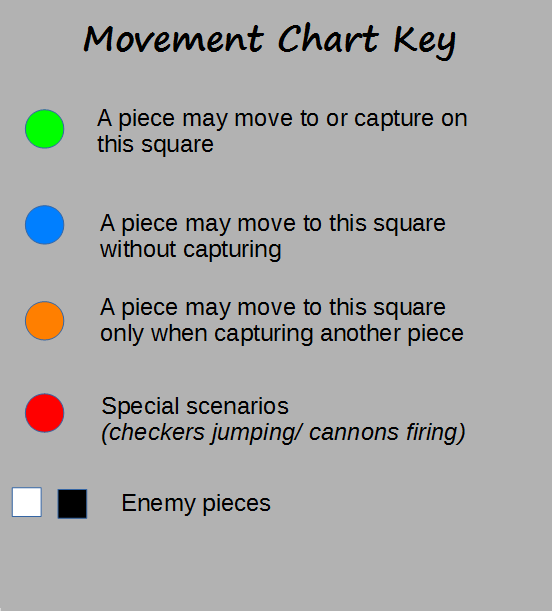
Etchessera Rules
Introduction
Etchessera is an expansion of the classic game of chess.
It is recommended that players learn how to play chess first.
The main rules of Etchessera are the same as classic chess except for some slight variations to account for movement of the new pieces.
Quick Start Rules
Each player builds an army consisting of a King and up to 39 points worth of additional pieces.
Once constructed, the pieces for these armies are placed on stands and placed on the board.
Major Pieces must be placed in the back row, while minor pieces (pawns, anti-pawns, and checkers) can be placed in any of the first three rows.
Etchessera.com/listBuilder.html provides a helpful tool for drafting armies and checking board position.
The White/Blue Team moves first unless black/orange used less points to construct their army.
Any new pieces will have a reference card describing their movement.
Play continues until a king is checkmated.
Complete Rules
Army Drafting
Each player will be able to build their own army consisting of up to 39 points worth of pieces and a King.
This amount is the same as the classic chess army.
These point values can be seen on
this page, the piece cards themselves, or the reference cards.
Players may choose the classic chess army or make any variations to it they would like.
An army can only have one of these pieces:
Setup
A king must be placed in the first row.
Otherwise, pieces can be placed according to the maximum point limits shown below.
Please visit
Etchessera.com/listBuilder.html for a tool that aids with setting up the board.
Pawn Promotion
Upon reaching the last row, a Pawn or Anti-Pawn may be promoted to any of the standard chess pieces excluding the King or Pawn.
These are:
Checkers can be promoted, but only to Checker King.
Castling
A king may castle with either a Rook or a Cannon if neither pieces have moved during the game, there are no pieces between them, and the King would not be moving out of, through, or into check.
In order to do this, the Rook or Cannon will move as many squares as necessary to be next to the King.
The King will then move to the other side of the Rook or Cannon.
The Guard, if one is in play will take the last occupied square of the King.
It will then move two squares on the King's subsequent move.
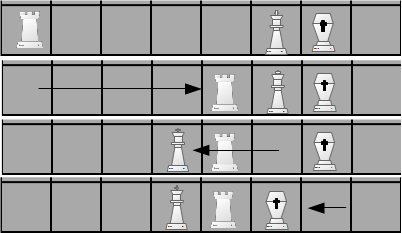
Moving Into Check
Players will never be forced to move into check.
If a player has no other moves except for one that forces them to enter check, the game still results in a stalemate as in regular chess.
However, players have the option of knowingly moving into check if they so desire.
When doing so, they must announce that they intend to move into check.
If they do not announce this, they can retract their move as in normal chess.
Players may wish to move into check for multiple reasons.
Moving into the range in which a cannon may, but will not necessarily shoot is considered moving into check.
Players may wish to take the risk versus another less advantageous move.
Additionally, use of a prince may lead players to sacrifice their King if their Prince will take over from a more opportune location.
What do the symbols on the cards mean?
Movement Cards
Below are images depicting how every piece in the game moves:
New Pieces
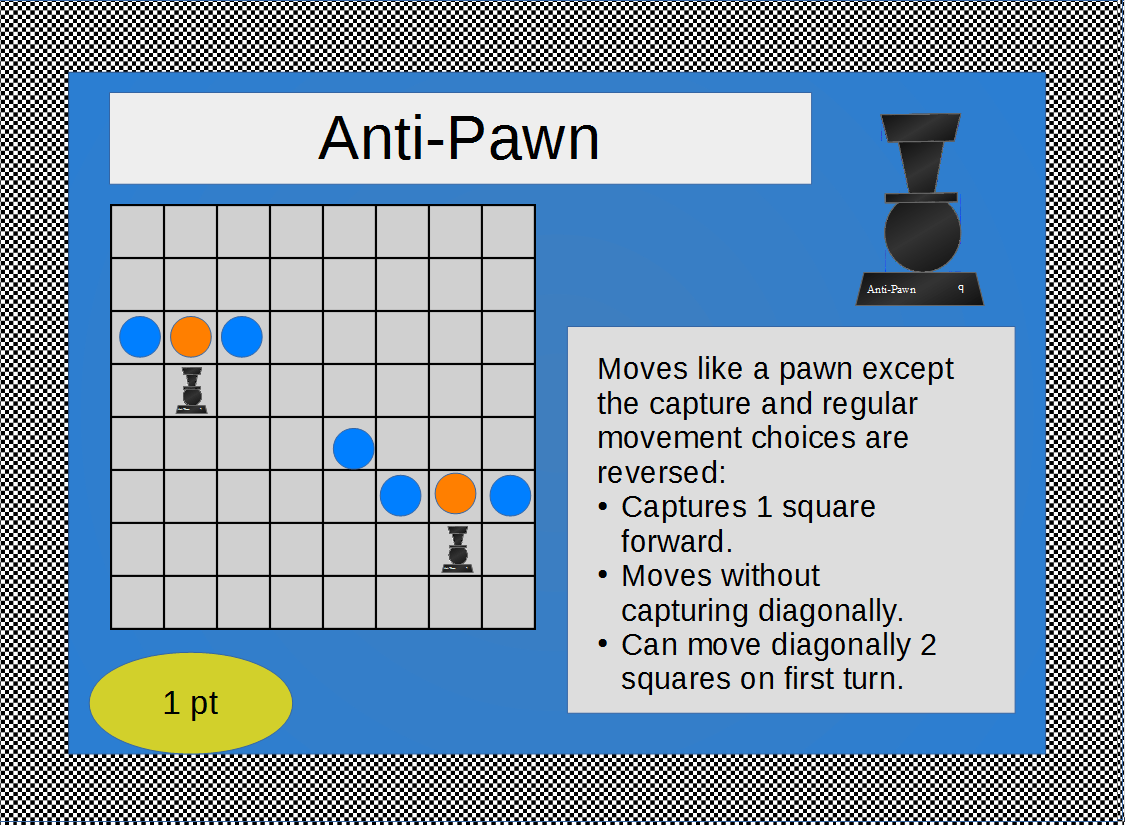
![]()

![]()
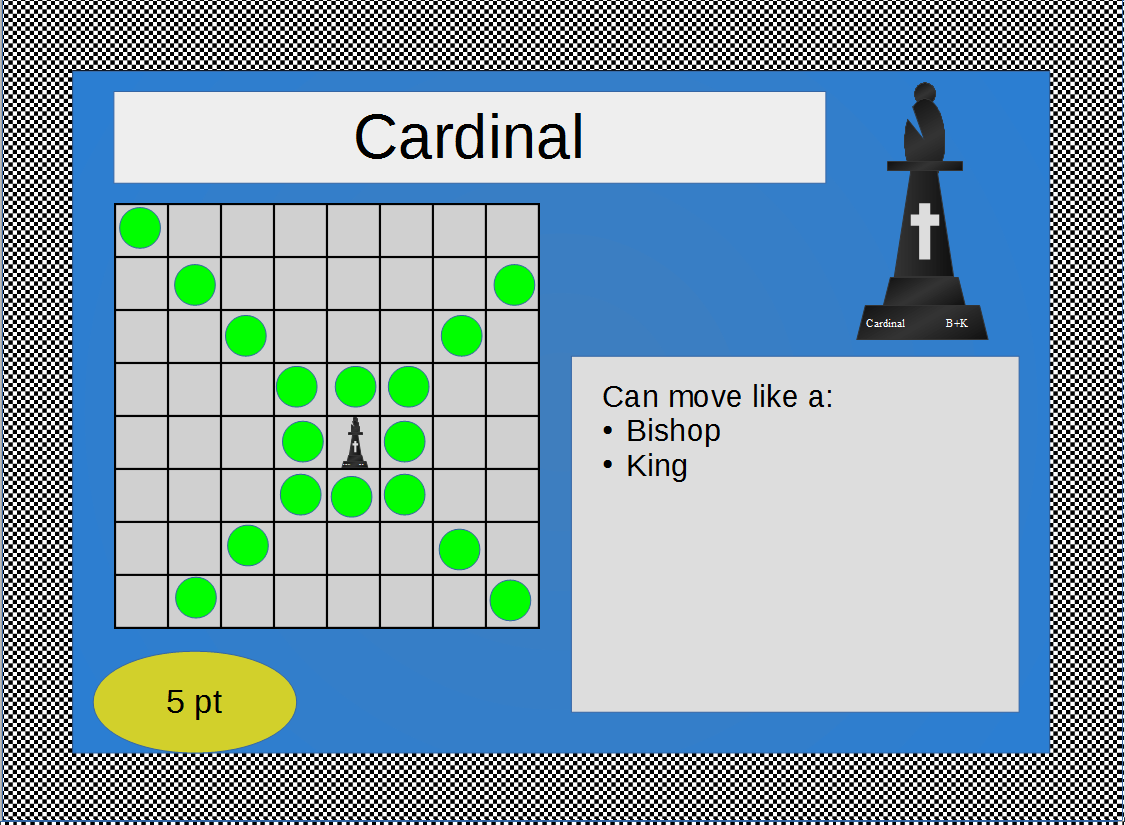
![]()
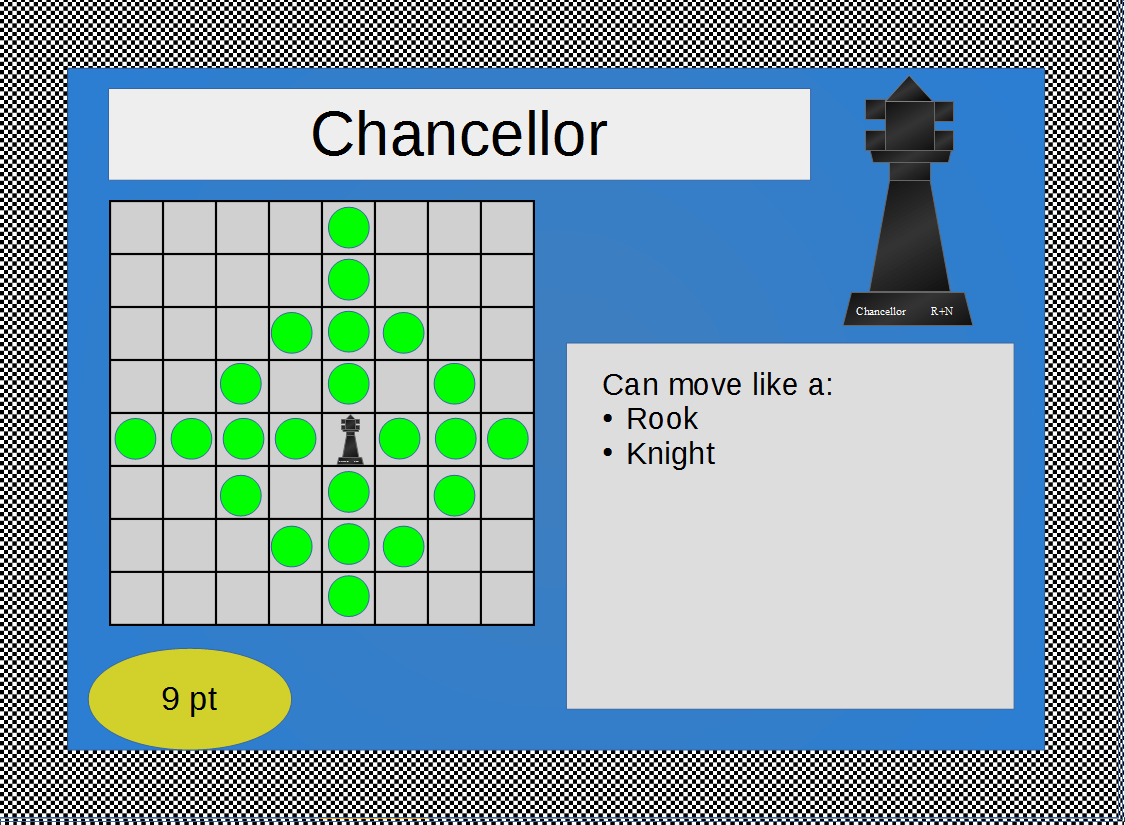
![]()

![]()

![]()
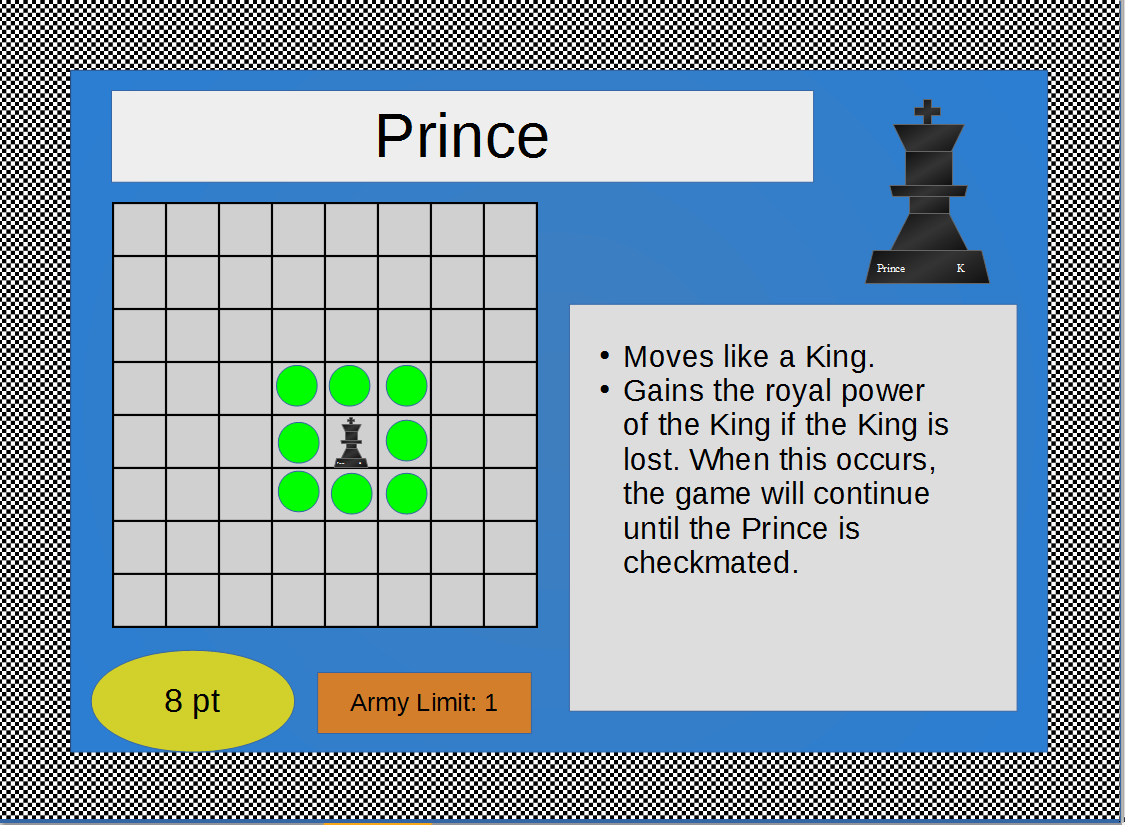
![]()

![]()

![]()
Classic Pieces
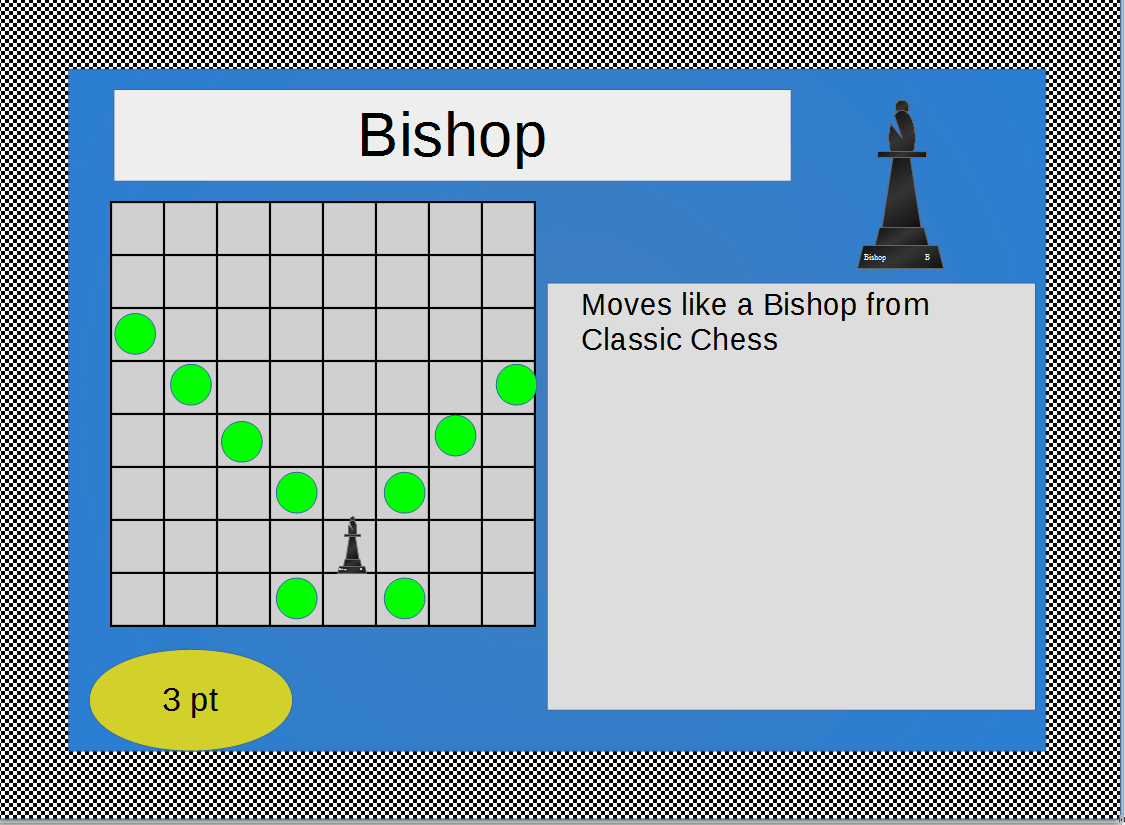
![]()

![]()
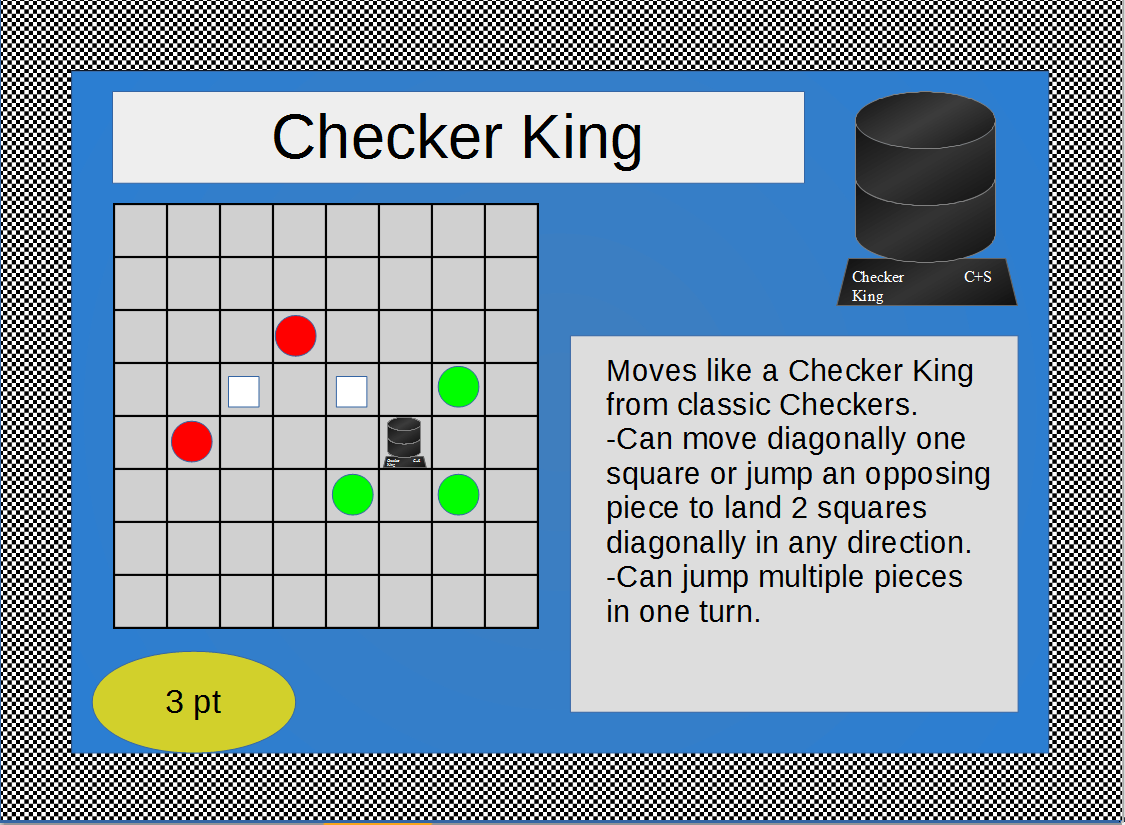
![]()

![]()

![]()

![]()

![]()
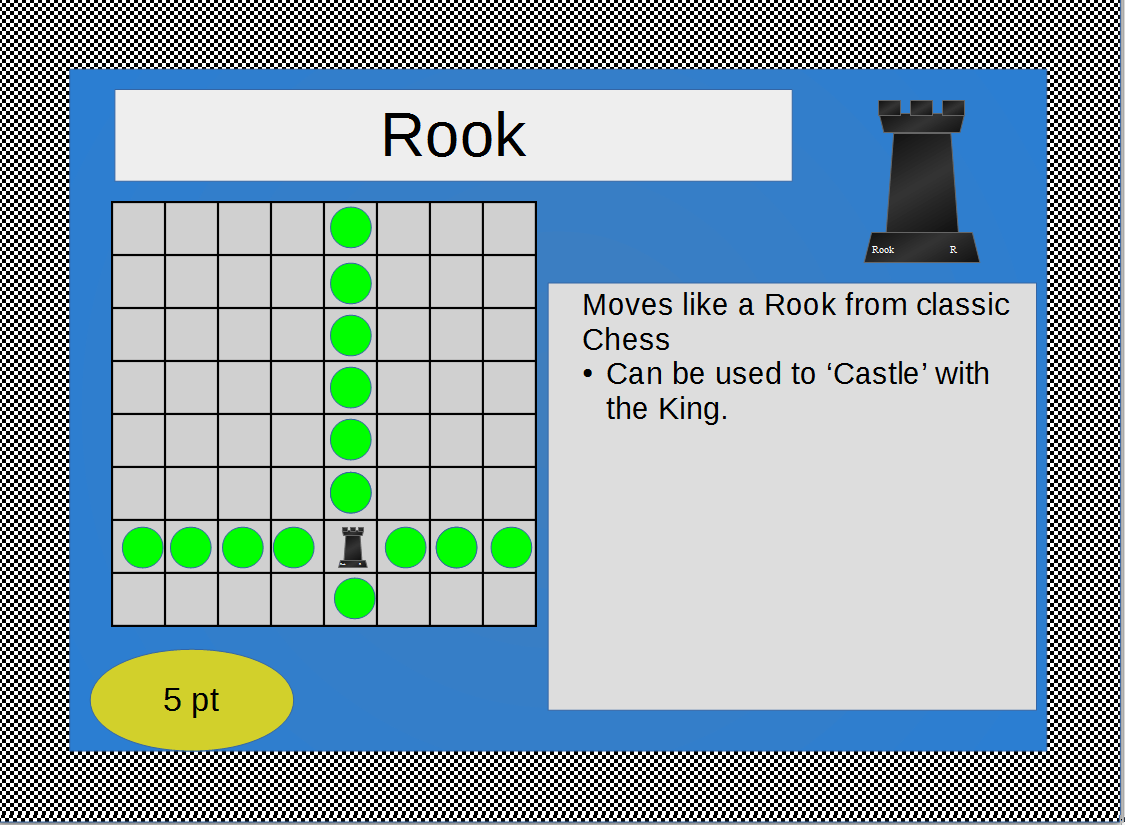
![]()
Additional Rules
Rules are subject to change with the introduction of additional expansion packs or pieces.



